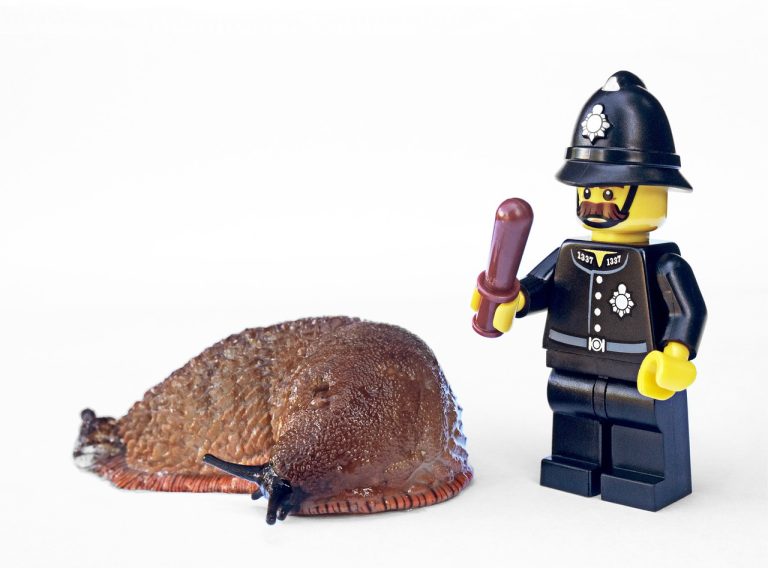If you’re looking for effective and eco-friendly ways to nourish your garden, you’ve come to the right place! In this article, we will explore various natural methods to fertilize your garden and help it thrive. From composting and mulching to utilizing organic fertilizers and growing nitrogen-fixing plants, we’ve got you covered with all the tips and tricks to promote healthy growth and vibrant blooms. So, put on your gardening gloves and get ready to give your garden the ultimate natural boost it deserves!
Table of Contents
ToggleOrganic Compost
What is organic compost?
Organic compost is a natural fertilizer and soil conditioner that is composed of decomposed plant matter, such as leaves, grass clippings, vegetable scraps, and other organic materials. It is rich in essential nutrients, microorganisms, and organic matter that help improve soil structure and fertility.
How is organic compost made?
Organic compost is created through a process called composting. This involves the decomposition of organic materials by microorganisms, such as bacteria and fungi, in the presence of oxygen. The decomposition process generates heat, which helps break down the materials over time. To make organic compost, you can start by collecting a mix of green materials (such as grass clippings and vegetable scraps) and brown materials (such as dried leaves and wood chips) in a compost bin or pile. It is important to maintain the right balance of green and brown materials, as well as moisture and oxygen levels, to facilitate the composting process.
Benefits of using organic compost
Using organic compost in your garden offers numerous benefits. Firstly, it enriches the soil with essential nutrients, such as nitrogen, phosphorus, and potassium, which are vital for plant growth and development. Organic compost also improves soil structure, enhancing drainage and aeration, which promotes healthy root growth. Additionally, it increases the water-holding capacity of the soil, reducing the need for frequent watering. Organic compost helps suppress diseases and pests, as it encourages the growth of beneficial microorganisms that compete against harmful ones. Lastly, it helps reduce waste by recycling organic materials that would otherwise end up in landfills.
How to use organic compost in the garden
To use organic compost in your garden, it is important to incorporate it into the soil before planting. Start by removing any weeds or debris from the area where you plan to apply the compost. Spread a layer of organic compost, about 2-3 inches thick, over the soil surface. Use a garden fork or tiller to mix the compost into the top 6-8 inches of soil. This will ensure that the nutrients are evenly distributed and easily accessible to the plant roots. After incorporation, you can proceed with planting seeds or transplants as usual. Throughout the growing season, you can also add a thin layer of compost as a top dressing around the base of plants to provide ongoing nourishment.
Mulching
What is mulching?
Mulching refers to the application of a protective layer of material over the soil surface in gardens and flower beds. It serves multiple purposes, including conserving soil moisture, suppressing weed growth, regulating soil temperature, and improving overall plant health.
Types of mulch
There are various types of mulch that can be used in the garden. Organic mulches include materials like straw, shredded leaves, grass clippings, wood chips, and compost. Inorganic mulches, on the other hand, consist of materials such as rocks, gravel, and landscape fabric. Both types have their advantages and can be chosen based on personal preferences and specific gardening needs.
Benefits of mulching
Mulching offers several benefits to your garden. Firstly, it helps retain moisture in the soil by reducing evaporation. This is especially important during hot summer months or in areas with low rainfall. Mulch also acts as a barrier, preventing weed seeds from germinating and competing with your plants for nutrients and water. Additionally, it insulates the soil, keeping it cooler in the summer and warmer in the winter, which promotes healthy root development. Mulch also helps prevent soil erosion by reducing the impact of heavy rain or wind. Furthermore, organic mulches break down over time, adding valuable organic matter to the soil and improving its fertility.
How to apply mulch in the garden
To apply mulch in your garden, start by preparing the area. Remove any existing weeds or grass, and ensure the soil is moist but not waterlogged. If using organic mulch, spread a layer, typically around 2-4 inches thick, over the soil surface, making sure to leave a small gap around the base of plants to prevent rot. If using inorganic mulch, such as landscape fabric or rocks, lay it down evenly and secure it in place. Keep the mulch layer away from stems or trunks to avoid creating a moist environment that might lead to disease. Replenish the mulch as needed to maintain the desired thickness and effectiveness.
Manure
What is manure?
Manure is a natural fertilizer made from animal waste. It contains a combination of organic matter, nutrients, and beneficial microorganisms that contribute to soil fertility and plant growth.
Types of manure
There are different types of manure that can be used as fertilizer, such as cow manure, horse manure, chicken manure, and sheep manure. Each type of manure has its own nutrient composition and characteristics. For example, cow manure tends to have a balanced nutrient profile, while chicken manure is high in nitrogen but can be hot and should be aged or composted before use.
Benefits of using manure as fertilizer
Using manure as fertilizer provides several advantages. Firstly, manure is a rich source of nutrients, including nitrogen, phosphorus, and potassium, which are essential for plant growth and development. These nutrients are released slowly over time as the manure breaks down, ensuring a steady supply to the plants. Additionally, manure improves soil structure by increasing its water-holding capacity and enhancing nutrient retention. It also contributes to the development of beneficial soil microorganisms, which support overall soil health. Manure helps promote sustainable agriculture by recycling organic waste and reducing reliance on synthetic fertilizers.
How to properly use manure in the garden
To properly use manure in your garden, it is important to handle and apply it correctly. Fresh manure should be composted or aged for several months before use to allow the breakdown of any pathogens or excess nutrients. This can be done by creating a separate compost pile designated for manure or by purchasing well-aged manure from a reputable source. Before applying manure to the garden, remove any visible bedding or large debris. Generally, manure can be added at a rate of 20-30 pounds per 100 square feet of soil. It is important to evenly distribute the manure and mix it into the top few inches of soil. Avoid overapplying manure, as excessive amounts can lead to nutrient imbalances or environmental pollution.
Grass Clippings
Using grass clippings as fertilizer
Grass clippings can be a valuable source of nutrients for your garden and an effective way to recycle yard waste. Instead of throwing away the grass clippings after mowing your lawn, consider using them as a natural fertilizer.
Benefits of using grass clippings
Using grass clippings as fertilizer offers numerous benefits. Firstly, grass clippings are rich in nitrogen, an essential nutrient for plant growth. By leaving the clippings on the lawn or incorporating them into the soil, you can return those nutrients to the grass, improving its health and reducing the need for synthetic fertilizers. Grass clippings also act as a natural mulch, helping to retain moisture in the soil and suppressing weed growth. Additionally, they contribute to the organic matter content of the soil, improving its structure, fertility, and overall health.
Precautions when using grass clippings
While using grass clippings as fertilizer is beneficial, it is important to take some precautions. Firstly, ensure that the grass has not been treated with herbicides or pesticides, as these chemicals can persist in the clippings and potentially harm your plants. It is best to use grass clippings from a lawn that is managed using organic practices. Secondly, avoid applying thick layers of grass clippings as mulch, as this can lead to matting and prevent air circulation in the soil. Instead, spread a thin layer of clippings and mix them into the soil or allow them to dry and then use them as mulch.
Coffee Grounds
Using coffee grounds as fertilizer
Coffee grounds can be an excellent source of nutrients for your garden. Instead of throwing them away after making your morning brew, consider utilizing them as a natural fertilizer.
Benefits of using coffee grounds
Using coffee grounds as fertilizer offers several benefits. Firstly, coffee grounds are rich in nitrogen, phosphorus, and potassium, which are essential nutrients for plant growth. They also contain significant amounts of other minerals, such as calcium, magnesium, and copper. By adding coffee grounds to the soil, you enrich it with these vital nutrients and contribute to the overall fertility of your garden. Coffee grounds help improve soil structure by enhancing its water-holding capacity and aeration. Additionally, they attract earthworms and beneficial microorganisms, which aid in breaking down organic matter and improving soil health.
Recommended usage and application
To use coffee grounds as fertilizer, it is best to compost them first. Coffee grounds are considered green material, so it is essential to balance them with brown material, such as dried leaves or wood chips, in the compost pile. This will help prevent the grounds from becoming too acidic. Once the coffee grounds have been composted, you can incorporate the finished compost into your garden, using it as a top dressing or mixing it into the soil. Alternatively, you can sprinkle the dried coffee grounds directly onto the soil surface around your plants, being careful not to pile them up against the stems. It is important to avoid using excessive amounts of coffee grounds, as they can make the soil too acidic.
Eggshells
Using eggshells as fertilizer
Eggshells can be a valuable source of nutrients for your garden plants. Instead of throwing them away, consider using them as a natural fertilizer and soil amendment.
Benefits of using eggshells
Using eggshells as fertilizer offers several benefits. Firstly, eggshells are primarily composed of calcium carbonate, which is essential for strong cell wall development in plants. By adding crushed eggshells to the soil, you can provide a slow-release source of calcium that promotes healthy growth and helps prevent conditions like blossom end rot in tomatoes. Eggshells also contain small amounts of other nutrients, including potassium and magnesium, and can help balance soil pH. Additionally, eggshells act as a deterrent for pests like slugs and snails, as the sharp edges can be uncomfortable for them to crawl over.
How to prepare and apply eggshells in the garden
To prepare eggshells for use in the garden, start by rinsing them thoroughly to remove any residual egg white. Let the shells air dry completely or bake them in the oven at a low temperature to ensure they are free from moisture. Once dry, crush the eggshells into small pieces or grind them into a fine powder using a blender or mortar and pestle. Sprinkle the crushed shells or powder around your plants, focusing on areas where calcium deficiency is likely to occur. You can also mix the crushed eggshells into the soil before planting. It is important to note that eggshells take time to break down and release their nutrients, so regular applications over time will yield the best results.
Banana Peels
Using banana peels as fertilizer
Banana peels can be an excellent natural fertilizer for your garden. Instead of discarding them, consider using them to provide a nutrient boost to your plants.
Benefits of using banana peels
Using banana peels as fertilizer offers several benefits. Firstly, banana peels are rich in essential nutrients, such as potassium, phosphorus, and calcium, which are vital for plant growth and development. Adding banana peels to the soil can help replenish these nutrients and promote healthy plant growth. Banana peels also contain small amounts of nitrogen and magnesium. Additionally, banana peels act as natural pest deterrents. Some pests, like aphids and spider mites, are repelled by the compounds present in banana peels, helping to protect your plants from infestations.
Methods of application
To use banana peels as fertilizer, there are a few different methods you can try. One method is to bury the banana peels directly in the soil around your plants. This allows the nutrients to gradually break down and be absorbed by the roots. Another method is to dry the banana peels and grind them into a powder. This powder can then be sprinkled around the base of your plants or added to compost. You can also create a banana peel tea by soaking the peels in water for a few days. The resulting nutrient-rich liquid can be diluted and used as a liquid fertilizer for your plants.
Seaweed
Using seaweed as fertilizer
Seaweed can be a fantastic natural fertilizer and soil amendment for your garden. If you live near the coast or have access to seaweed, consider using it to benefit your plants.
Benefits of using seaweed
Using seaweed as fertilizer offers numerous benefits. Firstly, seaweed is rich in trace minerals, including potassium, calcium, magnesium, and iron, which are essential for plant growth and development. These minerals are readily available in seaweed and can help improve soil fertility. Seaweed also contains natural growth hormones, such as cytokinins and auxins, which can enhance plant growth, root development, and overall vigor. Additionally, seaweed can help improve soil structure and water-holding capacity, making it a valuable asset in areas with poor or sandy soils. Seaweed also acts as a natural pest repellent, deterring slugs, snails, and some types of insects.
How to collect and apply seaweed
If you have access to seaweed, you can collect it yourself or purchase dried seaweed. If collecting it yourself, ensure that you are harvesting seaweed from areas free from pollution or chemical contamination. It is best to collect seaweed that has washed up on the shore, as removing live seaweed from its natural habitat can harm marine ecosystems. Before using seaweed in your garden, rinse it thoroughly with freshwater to remove any excess salt. Seaweed can be used directly as a mulch around plants or incorporated into the soil. It can also be soaked in water to create a liquid seaweed fertilizer. To create the liquid fertilizer, simply place the rinsed seaweed in a bucket of water and let it steep for a few weeks. The resulting liquid can be diluted and applied to plants as needed.
Fish Emulsion
What is fish emulsion?
Fish emulsion is a natural liquid fertilizer made from fish, usually byproducts of the fishing industry. It is a rich source of essential nutrients and beneficial microorganisms that promote healthy plant growth and soil fertility.
Benefits of using fish emulsion
Using fish emulsion as a fertilizer offers several advantages. Firstly, fish emulsion is highly concentrated with nutrients, including nitrogen, phosphorus, and potassium, which are crucial for plant growth. These nutrients are readily available in fish emulsion and can be quickly absorbed by plants. Fish emulsion also contains trace elements, such as calcium, magnesium, and sulfur, which are essential for overall plant health. Additionally, fish emulsion helps improve soil structure and increases microbial activity in the soil, supporting a healthy and balanced soil ecosystem. It is also a sustainable option, as it utilizes fish waste that would otherwise be discarded.
Application methods and precautions
Fish emulsion can be applied directly to the soil or used as a foliar spray. When using fish emulsion as a soil drench, dilute it according to the manufacturer’s instructions and apply it around the base of plants. For foliar application, dilute the fish emulsion with water and spray it directly onto the leaves, ensuring thorough coverage. It is important to avoid overuse, as excessive amounts of fish emulsion can lead to nutrient imbalances or burn delicate plant tissues. Additionally, the odor of fish emulsion can attract pests, so be mindful of this when using it in your garden. It is recommended to apply fish emulsion in the early morning or evening when pests are less active.
Green Manure
What is green manure?
Green manure refers to the practice of growing specific plants, known as cover crops, that are then incorporated into the soil to improve its fertility and organic matter content. Green manure serves as a natural way to replenish the nutrients in the soil and enhance its structure.
Benefits of green manure
Using green manure offers several benefits to your garden soil. Firstly, it helps control soil erosion by providing cover during periods when the soil would otherwise be left bare. Green manure also improves soil structure by increasing its water-holding capacity, enhancing aeration, and reducing compaction. Cover crops promote the growth of beneficial soil microorganisms and earthworms, which contribute to overall soil health. Additionally, green manure plants absorb excess nutrients from the soil, preventing them from leaching into water systems and causing environmental pollution. When the cover crops are incorporated into the soil, they decompose, releasing nutrients and organic matter that enrich the soil and support future plant growth.
How to incorporate green manure into the soil
To incorporate green manure into the soil, start by selecting a suitable cover crop for your garden and climate. Popular options include legumes like clover or vetch, cereals like rye or oats, and brassicas like mustard or radish. Plant the cover crop either in early spring or late summer, depending on the specific crop and your region’s climate. Allow the cover crop to grow for a few weeks to several months, depending on the desired results. When the cover crop has reached a suitable growth stage, mow or cut it down, leaving the plant material on the surface. You can then till the plant material into the soil to a depth of 6-8 inches, using a garden fork or tiller. Allow the cover crop to decompose and enrich the soil for a few weeks before planting your desired crops.
In conclusion, there are numerous natural ways to fertilize your garden, each offering its own benefits. Organic compost, mulching, manure, grass clippings, coffee grounds, eggshells, banana peels, seaweed, fish emulsion, and green manure are all excellent options to enhance soil fertility and promote robust plant growth. By incorporating these natural fertilizers and soil amendments into your gardening routine, you can create a sustainable and thriving garden while reducing waste and promoting a healthy environment. So don’t hesitate to explore these natural solutions and give your garden the nourishment it deserves!









